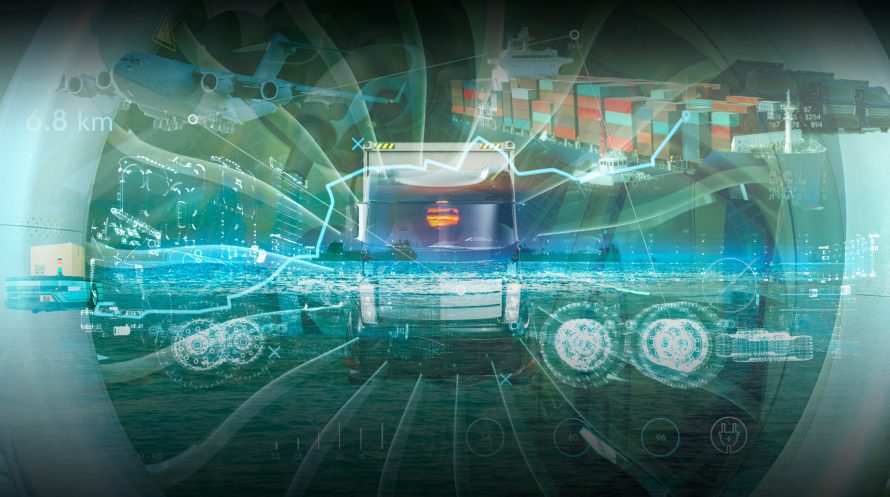Issue 2, June 2022
Blazing a high-tech, human-led trail with Schneider Electric
For Annette Clayton, CEO of Schneider Electric North America, resilience is more than just a pandemic buzzword; it’s her core philosophy. Building and maintaining resiliency is central to every facet of her business, from cultivating talent and creating an inclusive culture to delivering results for customers and shareholders.
The energy management and industrial automation giant, which reported 28.9 billion euro in revenues in 2021, combines world-leading energy technologies, real-time automation, software and services to help homes, buildings, data centers, infrastructure and entire industries achieve a more resilient future. Clayton has been focused on making Schneider Electric inherently more adaptable, sustainable and prepared for what she calls “the decade of disruption.”
Modern resiliency, she says, is built in both the virtual and real world through a combination of cutting-edge, predictive technology powering smart, agile decision-making. “You can’t know the unknowable,” Clayton admits, “but you can build a strong team armed with the right tools to navigate it.”
Agility is anything but risky business
When asked what has been most critical to the energy giant’s success during this era of disruption, Clayton answers without missing a beat: high-performing teams. With over three decades of supply chain leadership experience, including heading GM’s Saturn division, Dell’s global operations and now overseeing 33,000 of Schneider Electric’s 128,000 employees globally, Clayton is considered an expert teambuilder. The key ingredients, she says, are common objectives, accountability and trust. “High-performing teams have spent time together building that trust, genuinely care about each other and have the psychological safety to talk about what is not working,” she adds.
Have you lived and worked internationally? Have you had children? Have you been through a divorce? Have you taken care of your parents? This, combined with your education and all the skills in your toolbox, make a flywheel of learning agility that really talented people can apply to the next challenge and the next.
Perhaps the most important component to Clayton’s dream team is what she calls “learning agility,” an ability to apply a combination of competencies, life experiences and skills to new roles. “Have you lived and worked internationally? Have you had children? Have you been through a divorce? Have you taken care of your parents? These are life experiences that build strong fortitude,” says Clayton. “And this, combined with your education and all the skills in your toolbox, make a flywheel of learning agility that really talented people can apply to the next challenge and the next.”
While some may consider this approach risky, Clayton believes seeking out non-traditional qualifications is a surefire way to create diverse, resilient workforces. She also notes that the risk goes both ways. As someone who has “said yes to things I had no idea how to do,” Clayton advises everyone to take chances when opportunity knocks—especially women. “This is where gender bias does play out because we see our male counterparts often more willing to tackle something they’ve never done before,” she says. “Fortunately, I had mentors along the way who pushed me and gave me confidence, so when doors opened I took the risk to walk through them.”
A structural approach to flexibility
Like many pandemic-era leaders, Clayton was confronted with the challenge of building resiliency amid an unprecedented labor upheaval. Schneider Electric’s answer to the urgent retention crisis was an adoption of intentionally flexible policies. “We made sure to meet people where they were at, be very family friendly and give as much latitude as we possibly could,” says Clayton, noting how this approach continues today. “We instituted part-time programs because we didn’t want to lose someone who was just overwhelmed by life.”
Flexibility proved particularly valuable for female employees, who were quitting at higher rates than their male counterparts. According to Labor Department data in 2021, 2.5 million women left the workforce amid the pandemic, compared to 1.8 million men. In response to what she calls a “very alarming” trend, Clayton launched flexible initiatives specifically targeted at women. The global company, which spans more than 100 countries, also took a decidedly localized strategy to account for cultural nuance. In India, for example, which leads the world in the number of female engineering graduates, there was a concerning pattern among Schneider Electric employees: Scores of women engineers were quitting as their children were taking examinations. Recognizing that test preparation often falls to mothers, “We created a unique leave program, sabbaticals for them to do that function in their family and then allow them to return to the workforce,” says Clayton.
If you don’t de-carbonize your supply chain, you’re not really de-carbonizing.
Her other tactics include “forcing the conversation” around hiring to ensure there are least two female candidates for every opening and instituting a returnship program to support women reentering the workforce.
Digital twins win the pandemic
“As a leader, the best thing you can do is facilitate the team to the best possible outcome,” says Clayton, which includes surrounding them with the right technology. She says the most transformative tech trend to emerge for her business from pandemic-era chaos has been the application of the digital twin. This virtual replica of a company’s supply chain, manufacturing process or production line uses real-time data to simulate performance, analyze risks, model “what if” scenarios and provide valuable insights for navigating future disruption. “People are throwing out traditional forecasting processes,” says Clayton. “Digital twins allow more stakeholders to add input into the modeling, significantly increasing visibility across value chains.”
As COVID-19 lockdowns shuttered factories around the globe, multinational energy company ENEL used digital twin technology to develop a semi-autonomous plant overnight, transitioning 30,000 workers in Italy to a cloud-based remote model without disruption to their operations.
First applied to manufacturing in 2002, the modern digital twin is more powerful than ever, thanks to advances in machine learning, data science, artificial intelligence and the internet of things (IoT), which describes the universe of digitally connected physical devices feeding data to the 3D models. Today, these virtual tools mean real-world big business. Valued at $10.3 billion in 2021, the global digital twin market is expected to reach $54.6 billion by 2027.
Digital twins are now helping save the planet, too. Predictive modeling increases visibility of energy use and efficiency, which ultimately increases savings. In China, Schneider Electric’s digital twin technology, paired with its energy-saving and automation tools, helped Sanning Chemical design a new ultra-efficient plant. The results: Energy consumption was cut by 5% while production increased by 30%.
Greening global supply chains
According to Clayton, if leaders truly want to move the needle on sustainability—another core tenet of her resiliency roadmap—then they must look beyond their own backyards. For the average company, carbon emissions are 11 times higher in their supply chain than in their own operations. “So if you don’t de-carbonize your supply chain, you’re not really de-carbonizing,” she says.
Recently ranked No. 2 in Gartner’s Supply Chain Top 25 for 2022 list, Schneider Electric is committed to halving the carbon emissions of its top 1,000 suppliers’ operations by 2025. A major milestone on that journey includes partnering with Walmart, the world’s largest retailer, to increase access to renewable energy for the company’s U.S. suppliers.
Leadership is a team sport
A competitive athlete at a young age, Clayton excelled at individual sports, like track and cross country. She says it wasn’t until she got to the boardroom that she realized the power of a team effort. This has never been more apparent than over the past two years. “One of the things that was very clear as we managed through the pandemic and continue to navigate the uncertainty of today, is that I don’t have to have all the answers. We worked together to find better solutions than any of us could have individually,” says Clayton. “So my best advice, especially for new leaders, is to have the courage and wisdom to listen to the people around you.”



